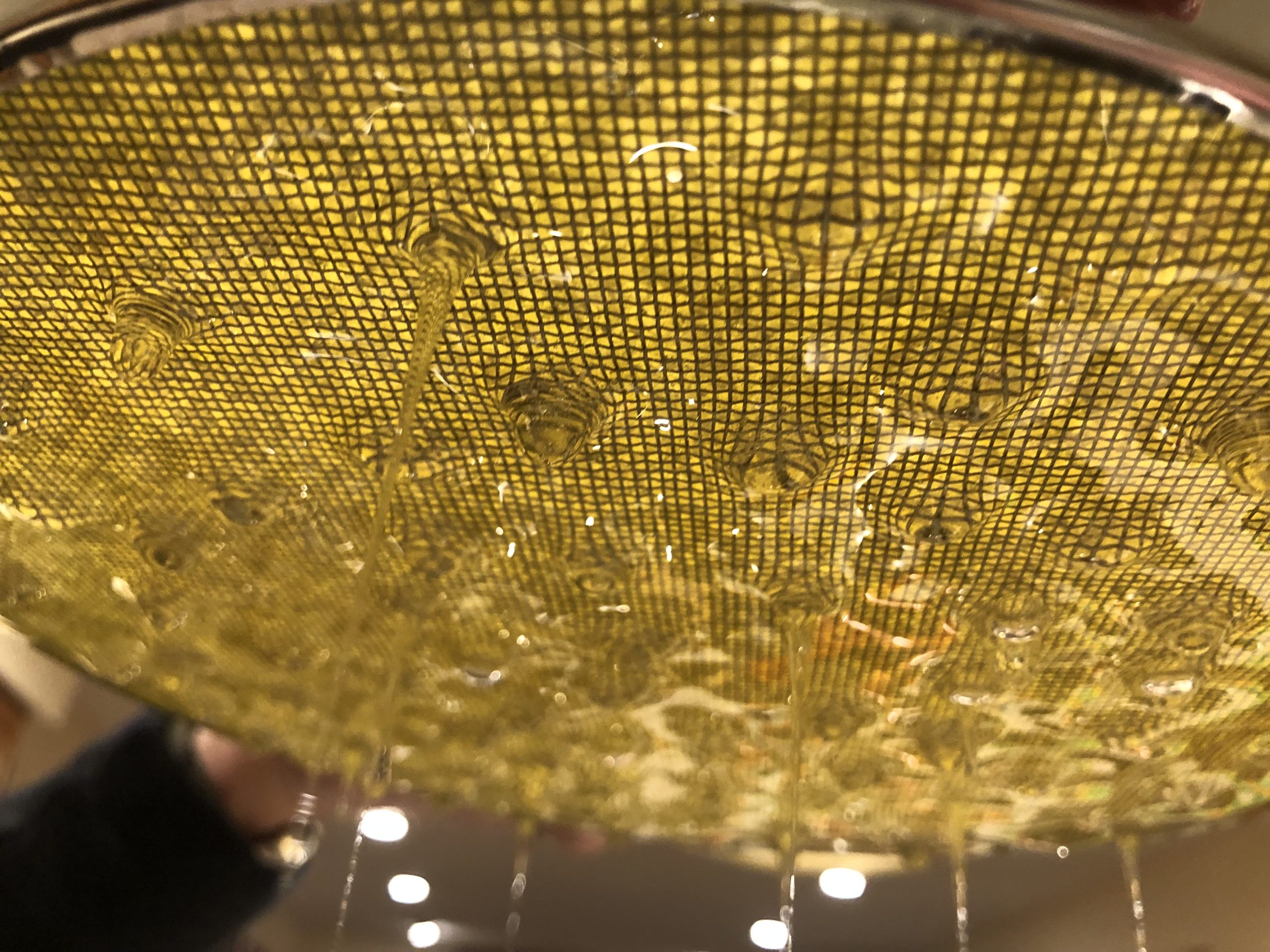Honey. It’s an ubiquitous sweet treat enjoyed worldwide. But how much does the average person know about honey? Speaking from my personal experience, it turns out that I didn’t know as much as I thought I did.
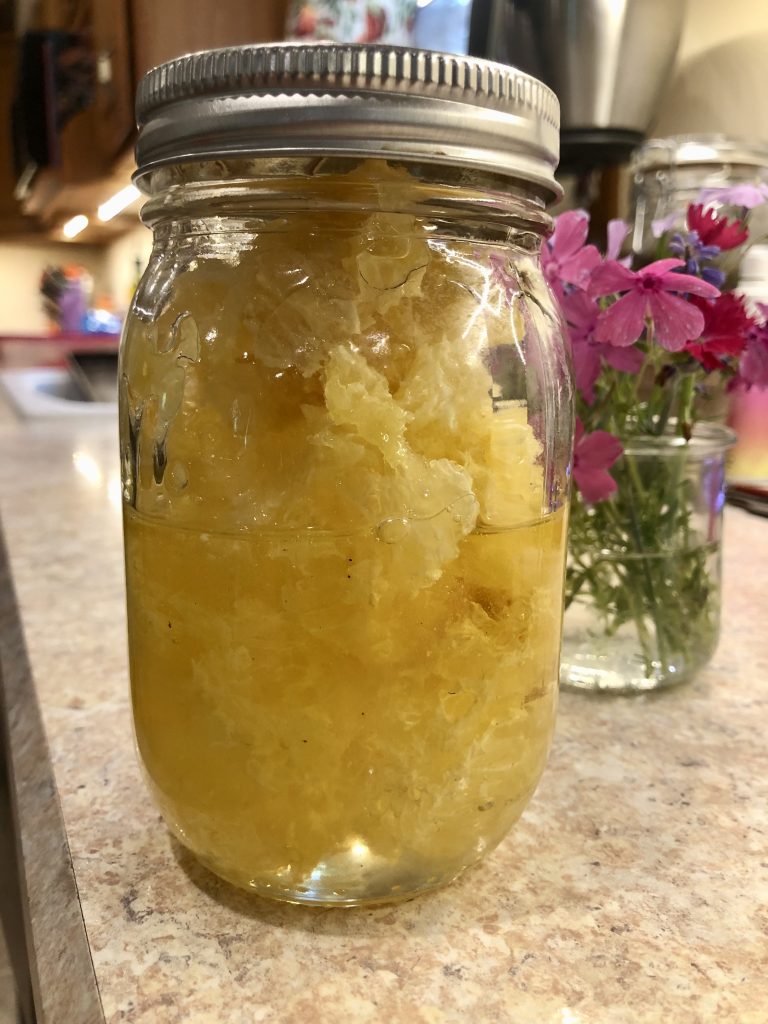
The average healthy colony of bees typically contains anywhere from 30,000 – 60,000 bees. The vast majority of those are worker bees with varying roles throughout their lifetime. In it’s entire lifetime of approximately 3-6 weeks, a worker bee will only produce 1/12th tablespoon of honey.
As bees flit from flower to flower, drinking the nectar, they store it in a special organ called a ‘honey stomach.’ When they have filled their honey stomach, they return to the hive to deposit the nectar into the familiar hexagonal wax cells via a bee assembly line of sorts where the nectar is regurgitated to the next bee’s mouth, then the next, etc. The process of being in the honey stomach, then regurgitated, adds enzymes from the bees that break the nectar down to more simple sugars and concentrates it at the same time.
Once the bees have deposited the honey into the storage cells, they will fan their wings to further evaporate and concentrate the honey until it is the ideal moisture content for storage – ranging from 15.5% – 18.6%. Once the honey reaches the appropriate moisture content for storage, the worker bees will then cap it off with wax for future use.
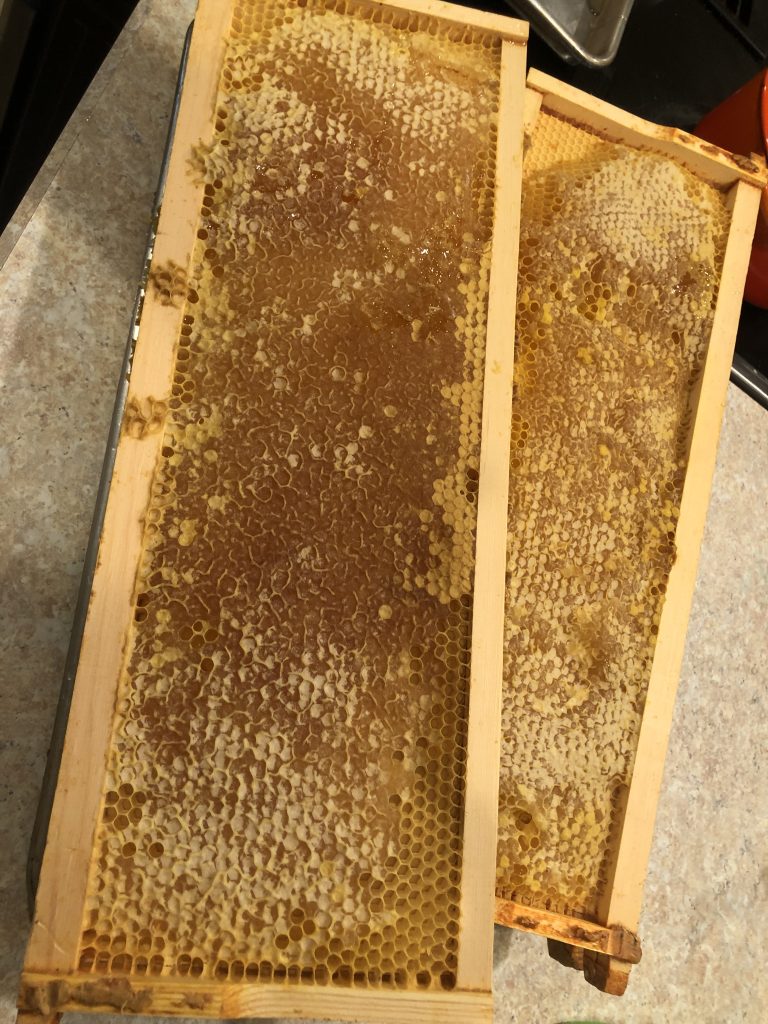
If, say, a beekeeper were to harvest the honey before it was at the appropriate moisture content and capped, it would ferment. If you’re looking to produce mead, this might be a desirable outcome, but it’s not what you want when you’re after long term storage of honey. Properly stored, honey is the only food that remains edible indefinitely.
It is very important as a beekeeper to ensure you only take a fraction of the honey produced by the bees, otherwise you risk killing the hive. A healthy hive produces an excess, so there is plenty for you to take some and leave the lion’s share for the colony. It’s truly fascinating how much honey is packed in those little cells. My first harvest I took only 4 medium sized frames and it resulted in over a gallon of honey!
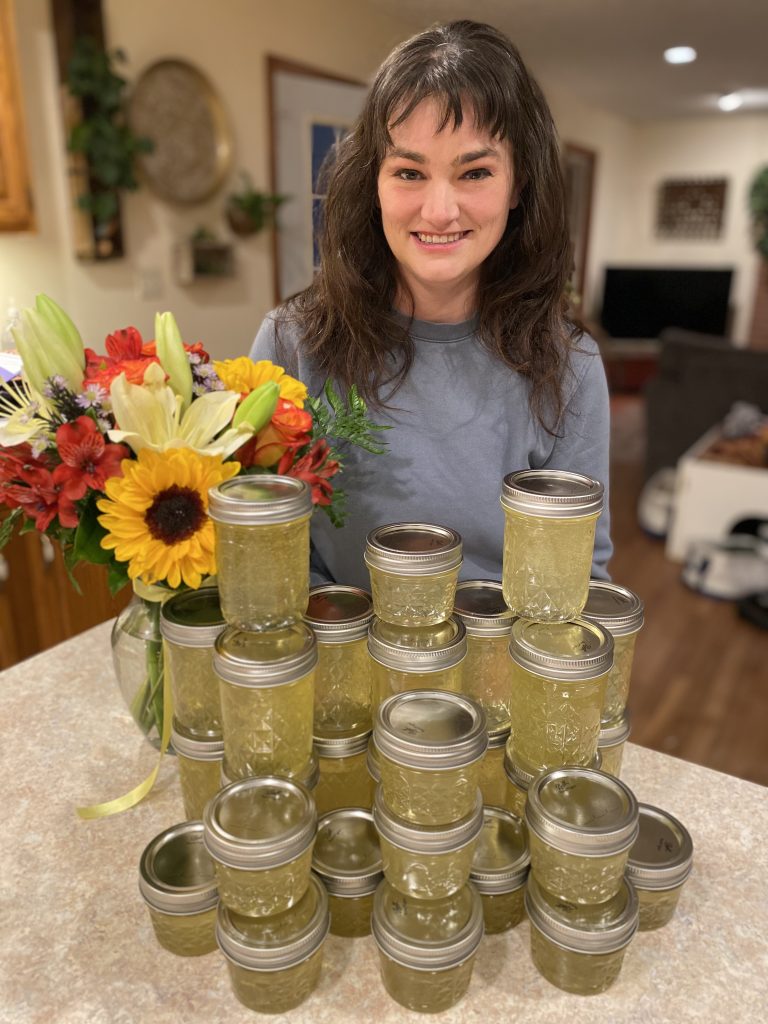
Depending on the productivity of the colony, it may be possible to have both a spring and a fall harvest. This past year I was able to take a small spring harvest from one of my two hives – the one with an attitude that I refer to as my ‘spicy hive.’ I then also took a fall harvest from spicy hive and from my calm hive as well, resulting in over 3 gallons of deep golden fall honey.
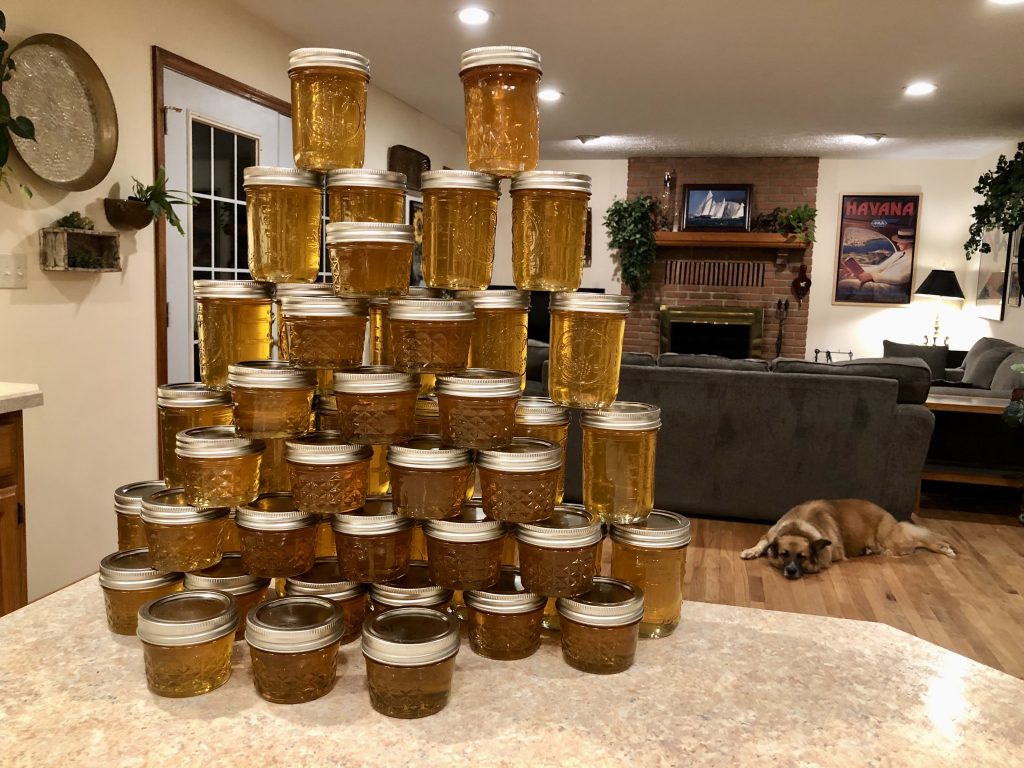
When I harvest, I prefer to only cut off the wax caps then spin the honey out in a special centrifuge. This extracts the majority of the honey while leaving the cells in place for the bees to reuse instead of needing to reproduce the wax then form it into cells. I don’t need to do any clean up of the cells, I can just return the now empty frames to the hive, the bees will clean them up and reuse them. I also let them do the clean up of any residual honey in the extractor and on the tools, this gets rid of basically all of the stickiness before I wash them up for storage.
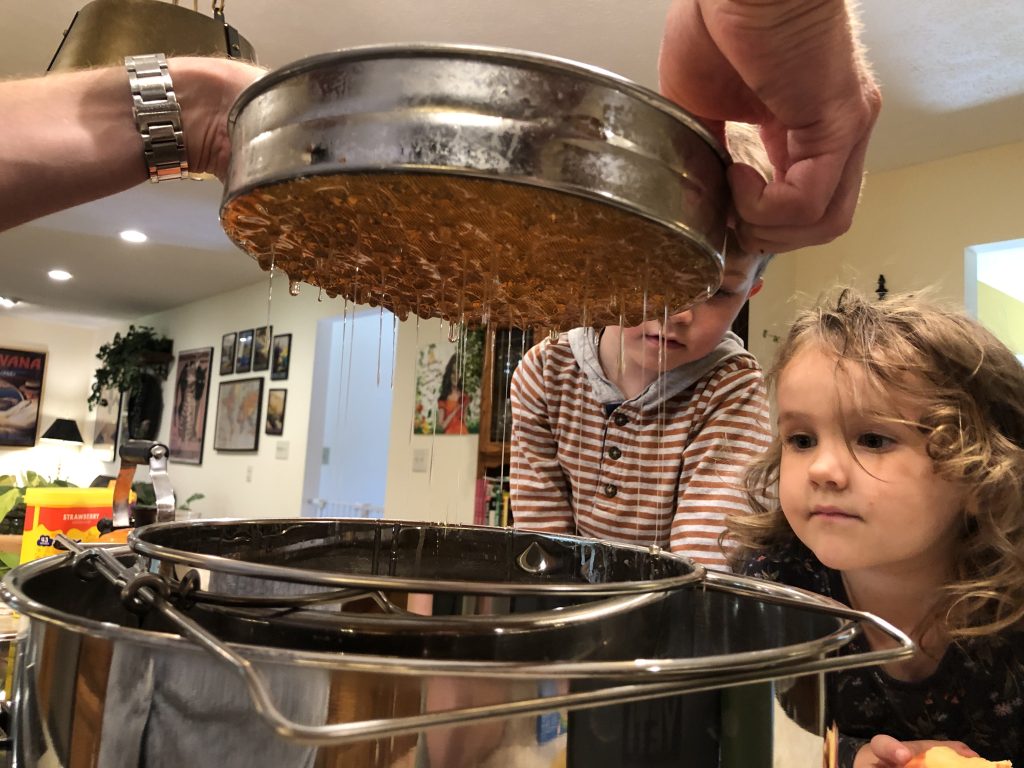
After filtering the honey through a metal mesh honey filter, I jar it up in mason jars for storage and to share with family and friends. Eventually I’d like to sell our honey once I feel that the hives are productive enough, but for now we’re enjoying sharing our bounty with those close to us.

